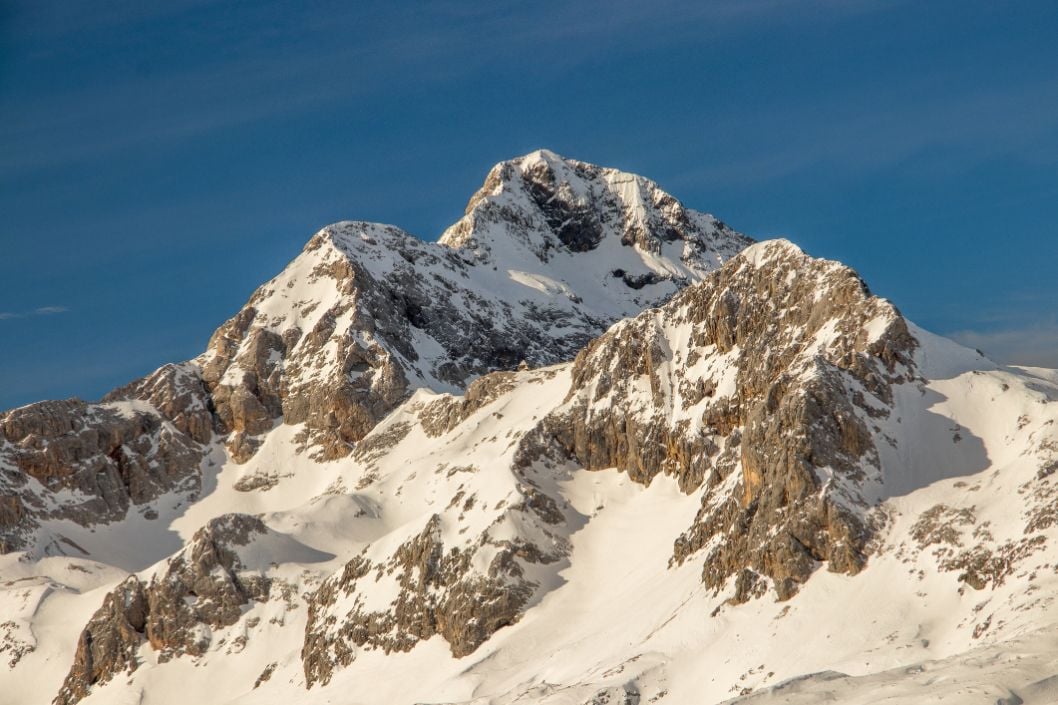The world is full of beautiful, snow-capped peaks, their summits reaching up towards the sky. It's also full of the stories of the people who climbed those mountains, from Edmund Hillary's initial ascent of Everest in the Himalayas, to Miss Sheila MacDonald being the first woman to climb Kilimanjaro. Much as it would be wonderful to make mountaineering history, most of us need to set our sights a little lower. After all, even the world's best climbers had to start somewhere.
Nobody ever said climbing a mountain was easy (and you shouldn’t believe them if they do). But some mountains are easier to climb than others. The highest peak in UK, for example, is much less challenging than the highest mountain in Nepal, for example. We've handpicked a list of the best mountains for beginners, trying to hit that sweet spot between exciting, rewarding and achievable.
The peaks we've selected are all over 2,000 metres (and some are closer to 4,000). To tackle them, you'll need to be physically fit. You'll also need to be up for a challenge, as you struggle up the steep slopes to the summit. However, you won't need any technical mountaineering experience to get to the top. So without further ado, these are the 10 best beginner mountains to climb.
The Best Mountains for Beginner Climbers, Mapped
These are our favourite mountains to climb, mapped out. Many of them are located in and around Europe. Despite being suitable for beginners with no mountaineering experience, we'd always recommend going with a guide.
1. Mount Triglav, Slovenia (2863m)
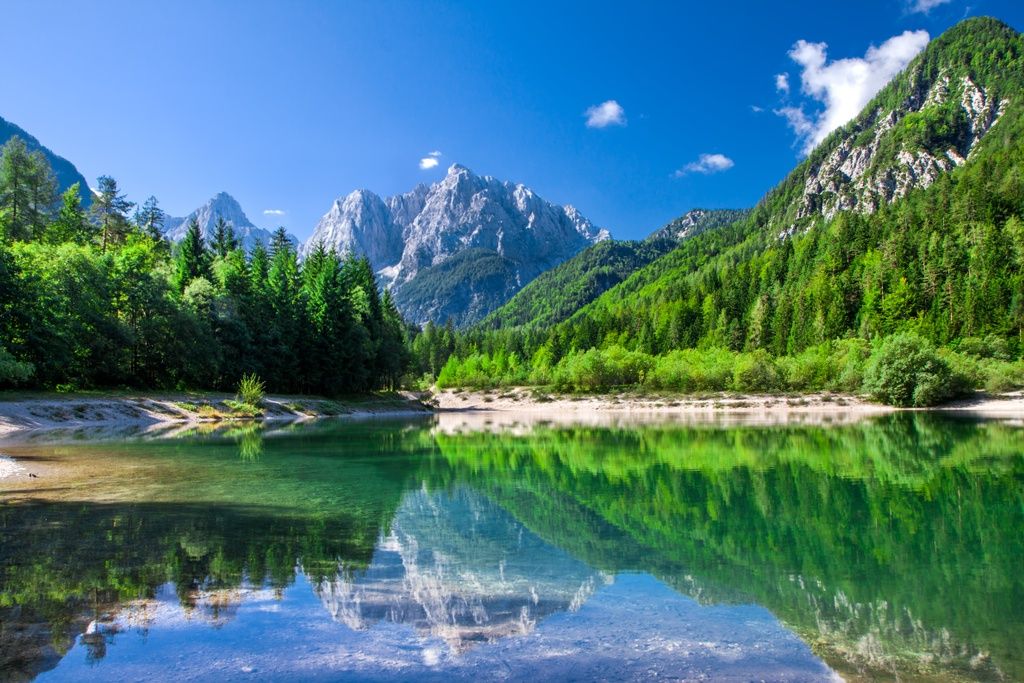
- Perfect for: trying your first via ferrata
At 2863 metres, Triglav is the highest mountain in the Julian Alps (northeast Italy to Slovenia) and first in our list of 'easy' mountains to climb. Attempts to climb the summit normally require two days. While the mountain itself is quite barren and rocky, it sits in the middle of Slovenia’s only national park, with the same name as the mountain.
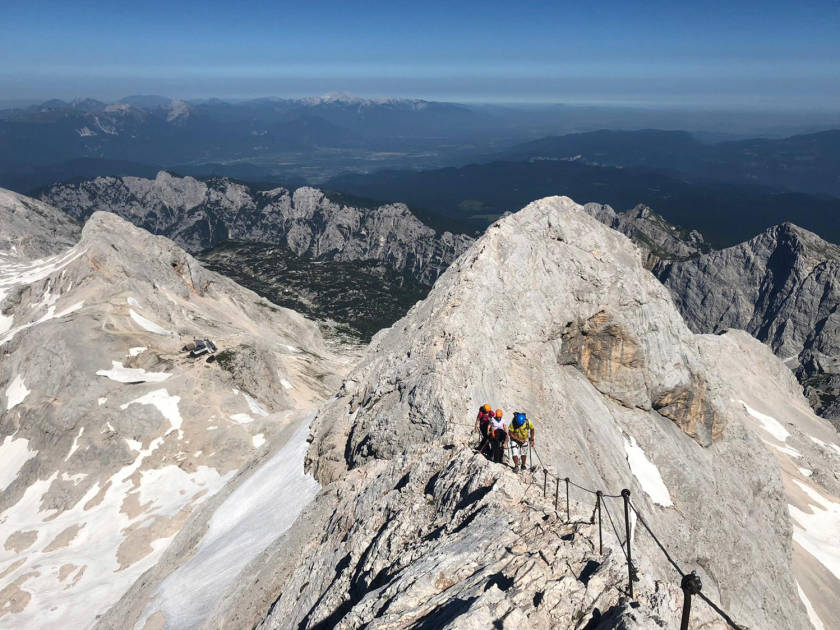
Reaching base camp takes about six hours of trekking through the forest. Much of the way is aided by via ferrata—or iron steps and cables attached to the side of the mountain. Slovenian tradition demands that those who have summited have their bums whipped by ceremonial birch branches!
Read more: Climbing Mount Triglav: 5 of the Best Routes up Slovenia's Highest Mountain
2. Mount Toubkal, Morocco (4167m)
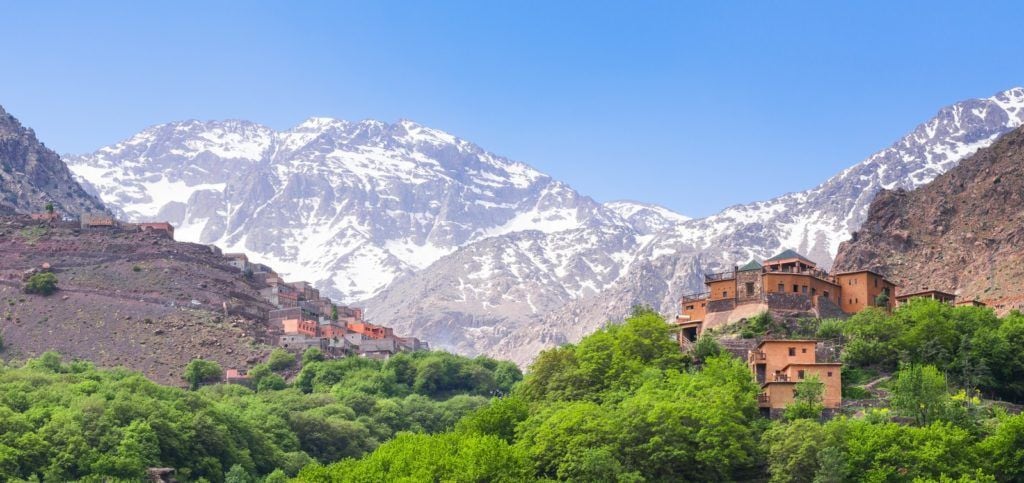
- Perfect for: your first 4000+m peak
Toubkal, in the Atlas Mountains of southwestern Morocco, is the highest peak in North Africa, at 4167 metres. It's made the best mountain to climb list because you can climb it all year around, although it's more challenging climbing Toubkal in winter: crampons and ice-axes are needed between November and May. At other times of year no special equipment is needed.

At the quickest, it can be climbed in two days and is accessible from Marrakech, although beware of altitude sickness - you want to enjoy trekking. As well as beautiful views, a highlight of climbing this peak is the Berber communities through which you’ll pass on the way. When skies are clear, the Sahara Desert can be seen in the distance from the summit.
Read more: The Guide to Climbing Mount Toubkal
3. Mount Maglić, Bosnia (2,386m)
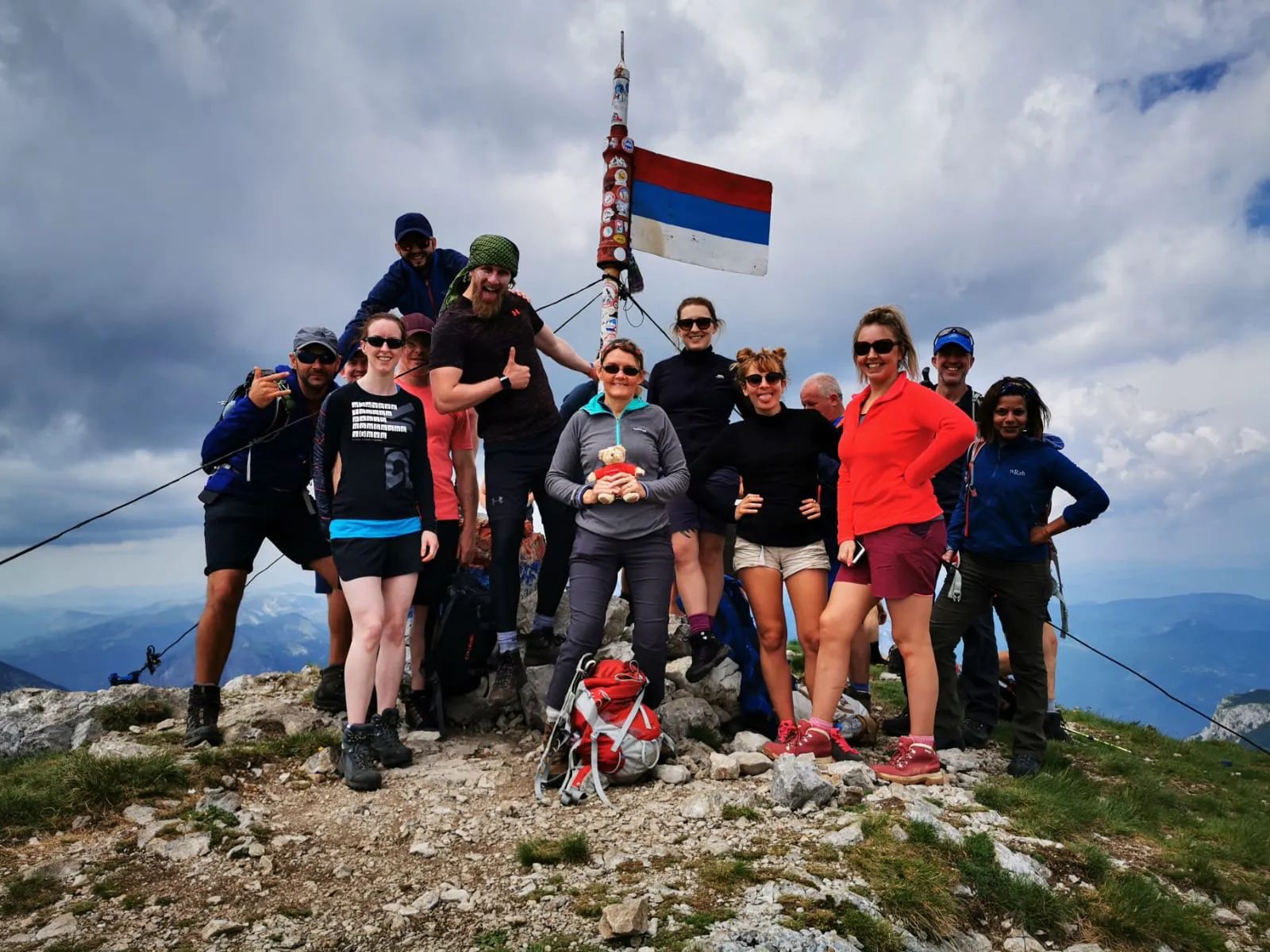
- Perfect for: untouched trails
The tallest peak in Bosnia is surrounded by untouched wilderness, and is the ideal hike if you want uncrowded trails. Over a challenging day hike of eight to 10 hours you'll trek through primeval rainforest and scramble up the mountainside for views of the surrounding lake and mountains. It's a steep descent down a scree path, but a good night's rest awaits you in the small village of Tjentiste.
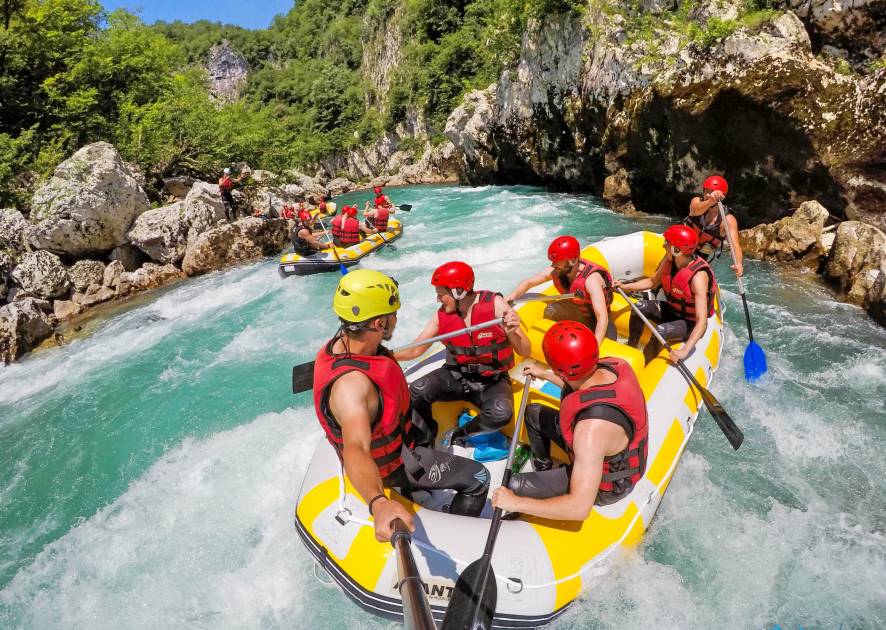
4. Breiskrednosi, Norway (1189m)
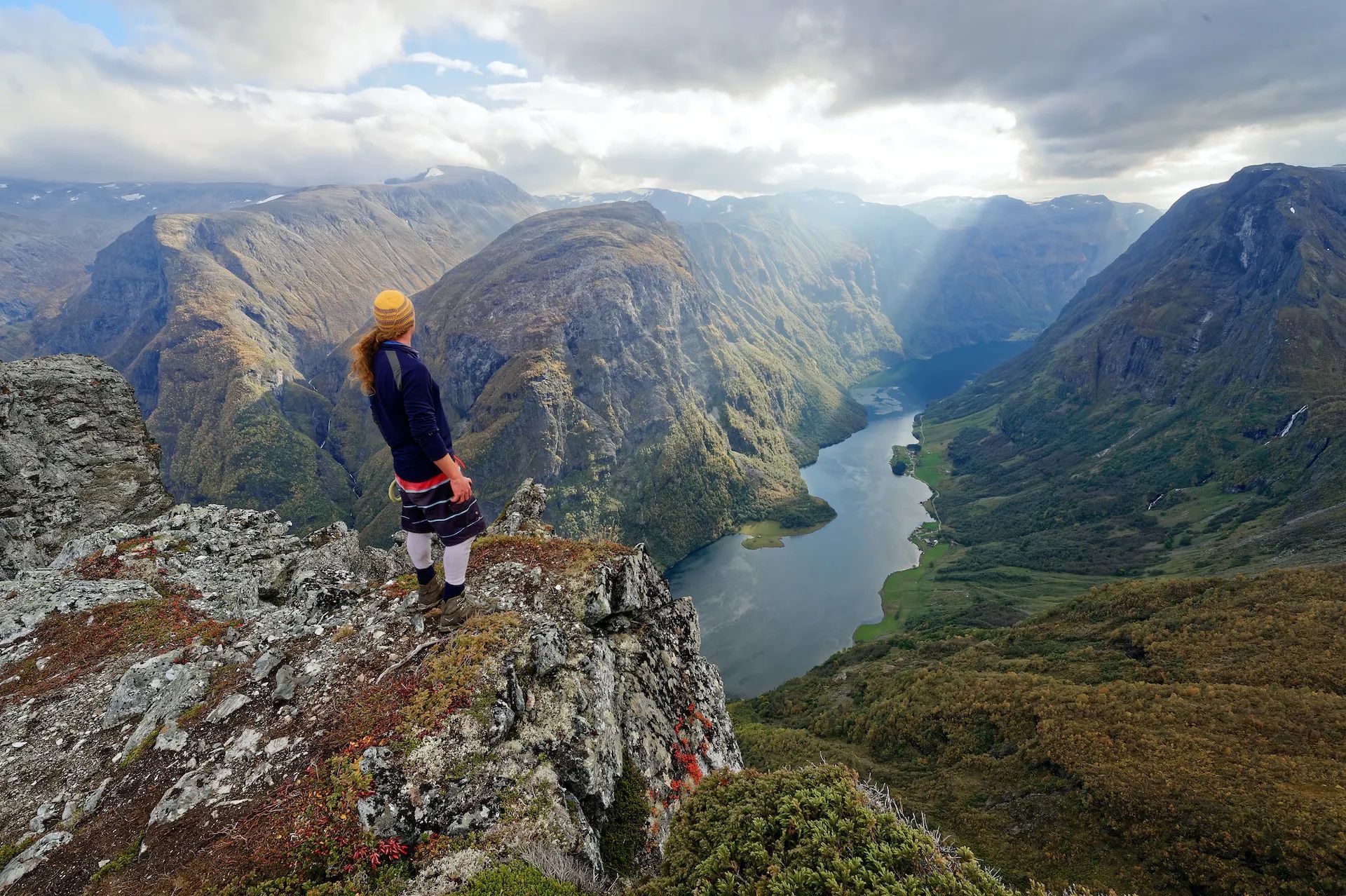
- Perfect for: uninterrupted fjord views
You may scoff at the thought of a mountain summit that's only a little over a thousand metres, but this hike is a challenging one - in some conditions it can take up to ten hours. For much of the year the trails are covered in snow, making the steep paths to the top even more difficult. Added to this, the start of the hike is in the heart of Norway's Nærøyfjord, and only accessible by boat.

If you're feeling intrepid you can kayak there the day before, and wild camp before attempting the summit. The views from the top are spectacular - you'll see the glassy fjord waters surrounded by dramatic stone mountains.
Read more: 'The Benchmark for Beauty': Kayaking the Fjords of Western Norway
5. Snowdon, UK (1085m)
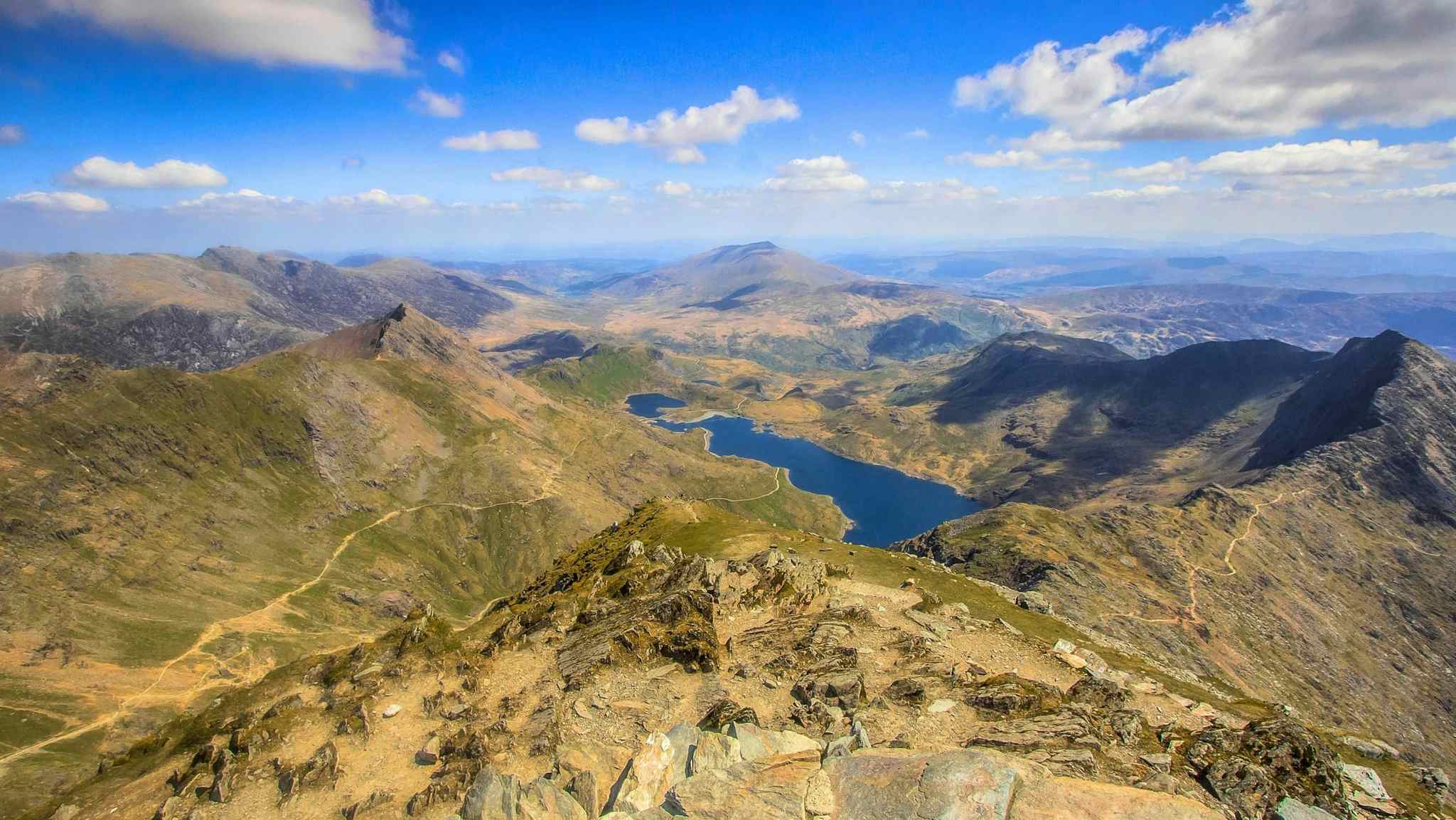
- Perfect for: your first summit attempt - in the UK
If you've never climbed a mountain before, you don't need to look far if you want to test yourself. Snowdon (Yr Wyddfa) is the highest mountain in Wales, at 1085m, climbed by thousands of people a year. There are six different routes up Snowdon - the Llanberis path is one of the easiest and most popular (and therefore most crowded).
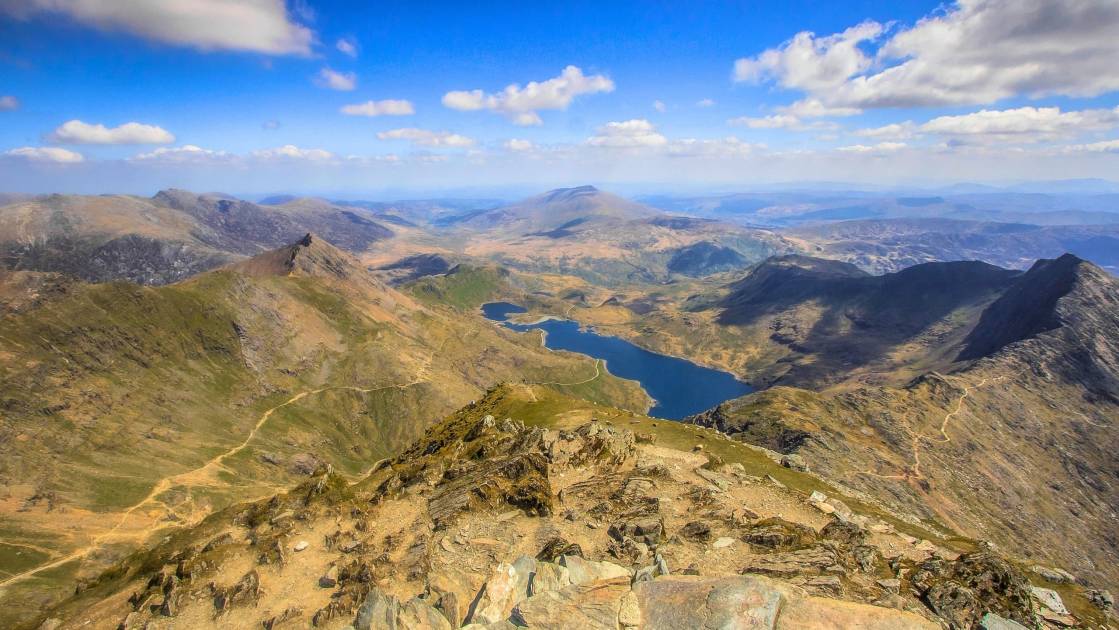
A second option is the Snowdon Ranger Path. It also starts from the Snowdon Ranger station of the Welsh Highland line that runs along the valley. You'll follow a path winding up the steep mountainside, crossing several mountain streams and passing above lake Llyn Ffynnon-y-gwas. After the lake, you'll hike up a rocky path on a scree slope, the route marked by cairns. Near the top, it joins the other paths to the summit, where you'll have a view over the peaks and glacial lakes of Snowdonia.
Read more: Climbing Snowdon: The 6 Best Routes up Wales' Highest Mountain
6. Corno Grande, Italy (2912m)
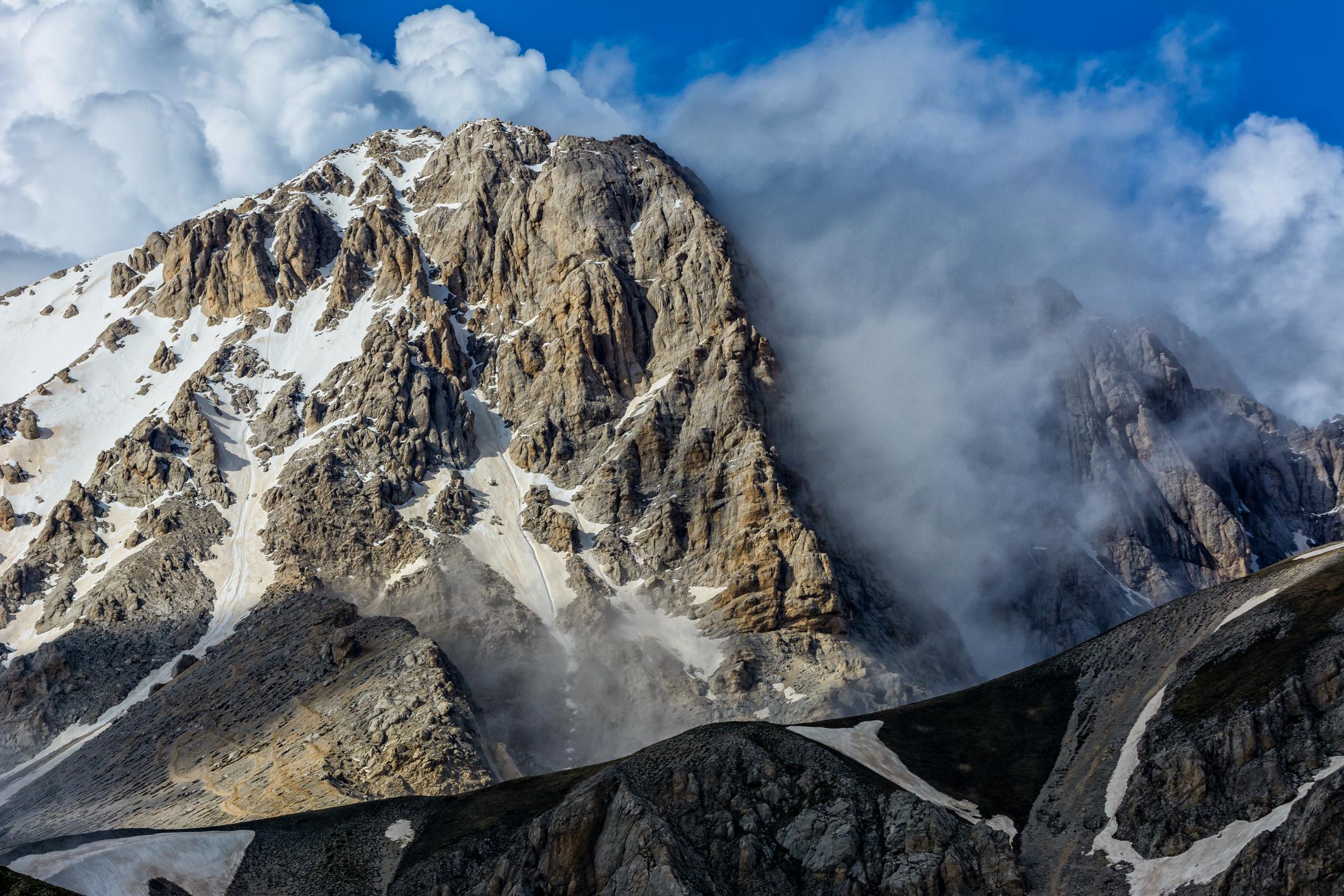
- Perfect for: exploring Italy's 'rocky heart'
Corno Grande is the highest mountain in the Apennines, a range in the undiscovered region of Abruzzo. Nicknamed 'Italy's rocky heart' - it's a towering limestone peak that's around five million years old. It's an eight hour hike to the summit and back, so if you want a day-long challenge, this is the one for you.
Setting off from Campo Imperatore, the path ascends steeply up towards the saddle of Monte Aquila with views of the karst plateau and the peak's limestone walls in the distance. To reach the summit you'll tackle some steep exposed sections and scramble closer to the top of Corno Grande for a view of Europe's southernmost glacier down below - this is one you'll need to do with a guide.
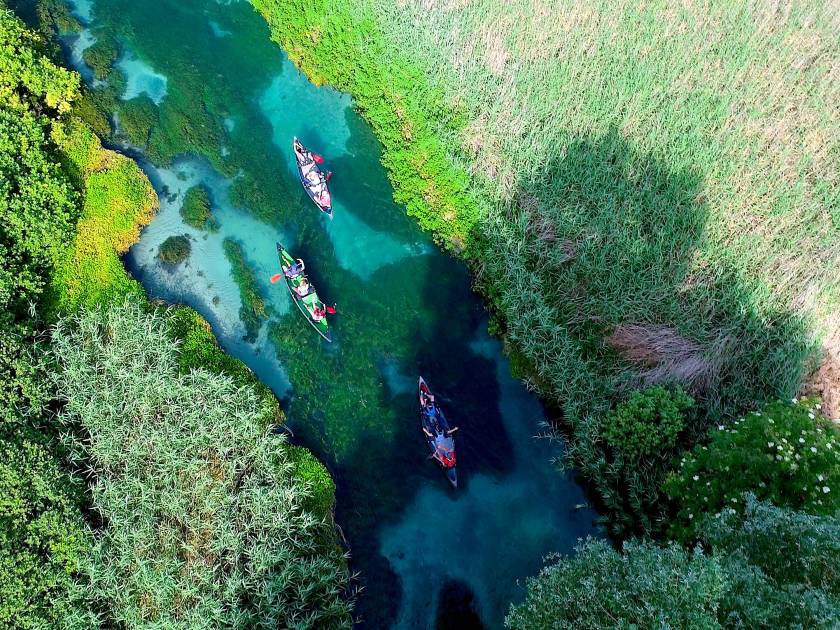
7. Mount Olympus, Greece (2918m)
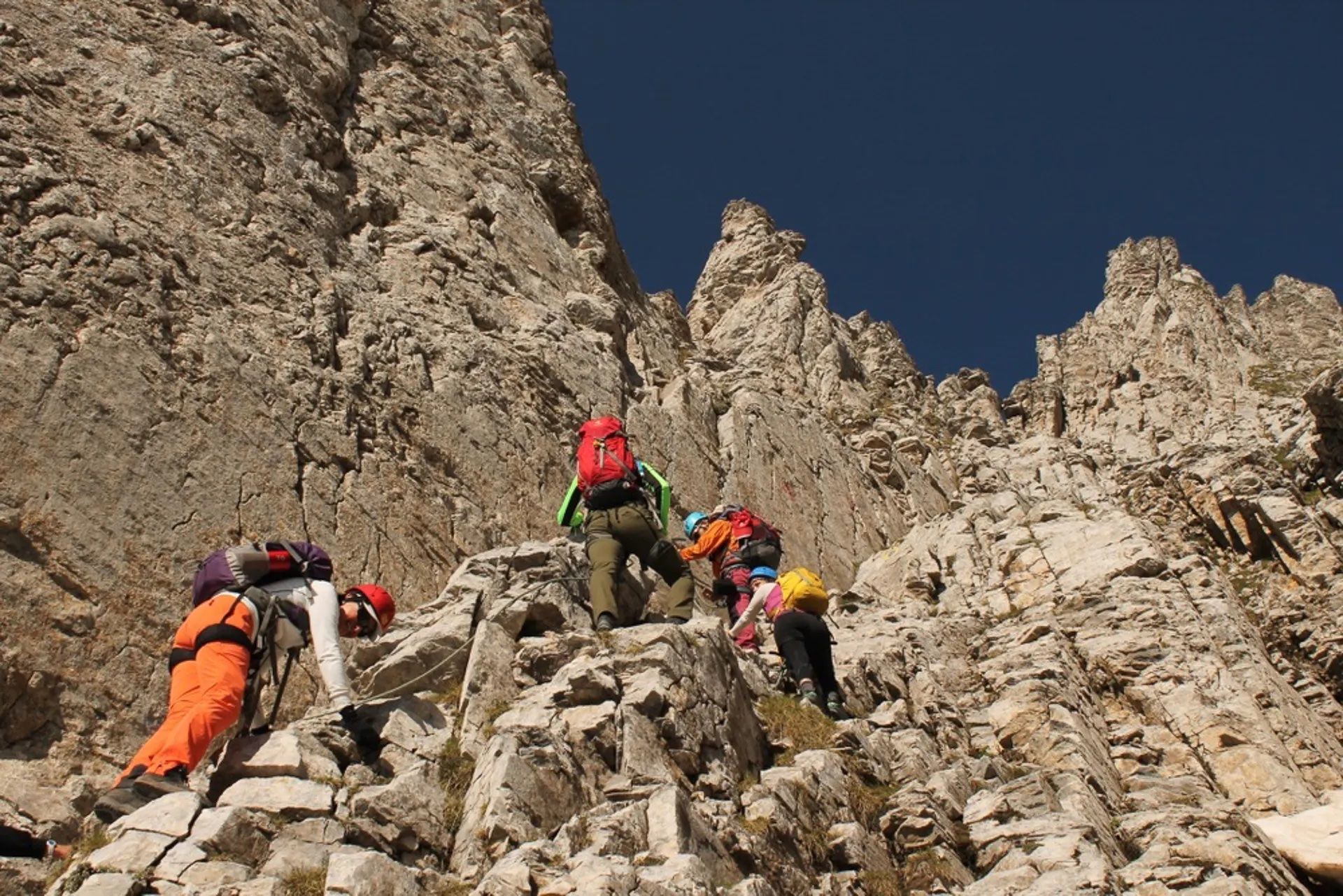
- Perfect for: testing your scrambling skills
Mount Olympus is shrouded in importance. It is prominent both in culture - as the home of the Greek gods - and in appearance, a rocky massif rising steeply from the surrounding pine forests. Climbing to the top is a challenge for experienced hikers only. On the first day you'll climb from the trailhead at Prionia (1100m) up to the Mount Olympus refuge, located at 2,650m.

There are two options the next day - you can either climb Skala Peak (2882m) and cross a narrow ridge to the adjacent Skolio Peak (2911m), or attempt the mountain's highest summit, Mytikas (2918m). For the latter, you'll undertake a couple of hundred metres of scrambling, roped up to the rest of your team - something that will help build your confidence in tackling tougher summits.
Read more: Mount Olympus: A Guide to Climbing the Mountain of the Gods
8. Pico Ruivo, Madeira (1862m)
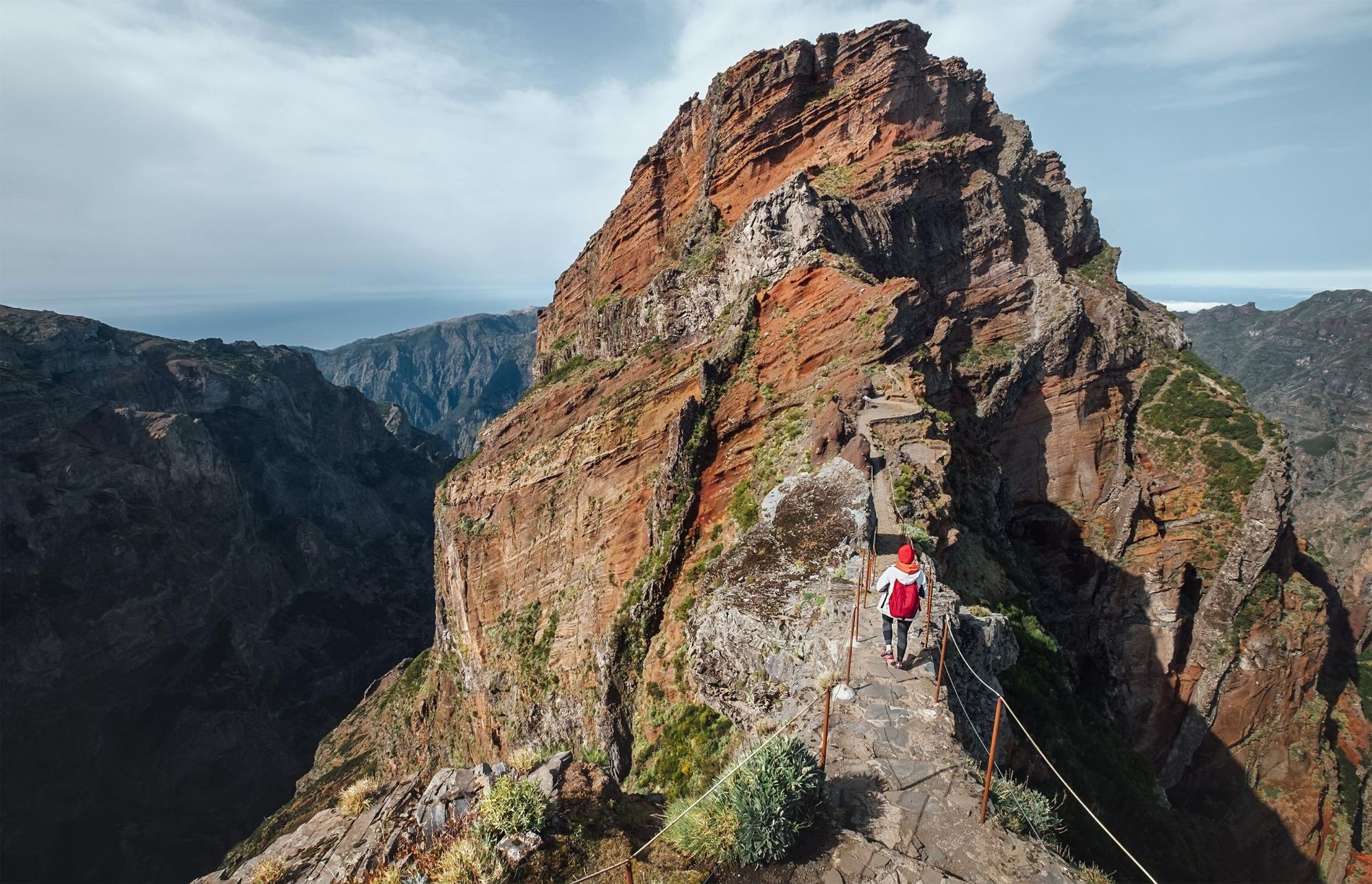
- Perfect for: exploring ridgelines, stairways and tunnels alongside three summits
Madeira has shaken off its image as an island for the 'newly wed or nearly dead', and has emerged as a hot new adventure destination, thanks in large part to its amazing hiking opportunities. One of the best is the PR1 path, which traverses the island's three highest mountains – Pico do Arieiro (1817m), Pico das Torres (1851m) and Pico Ruivo (1862m) – also known as the 'stairway to heaven.'

The trail takes you up high mountain ridgelines, narrow pathways, steep stairways, and man-made tunnels which you'll need a head torch to navigate. You’ll be surrounded by the best mountain scenery Madeira has to offer. The hike culminates at the island's highest peak, Pico Ruivo, after around seven hours of hiking. We recommend arriving at golden hour and then staying at the mountain hut on the summit so you can enjoy the sunset and the starlight in this gorgeous environment.
Read more: 5 of the Best Hikes in Madeira
9. Tito, North Macedonia (2748m)
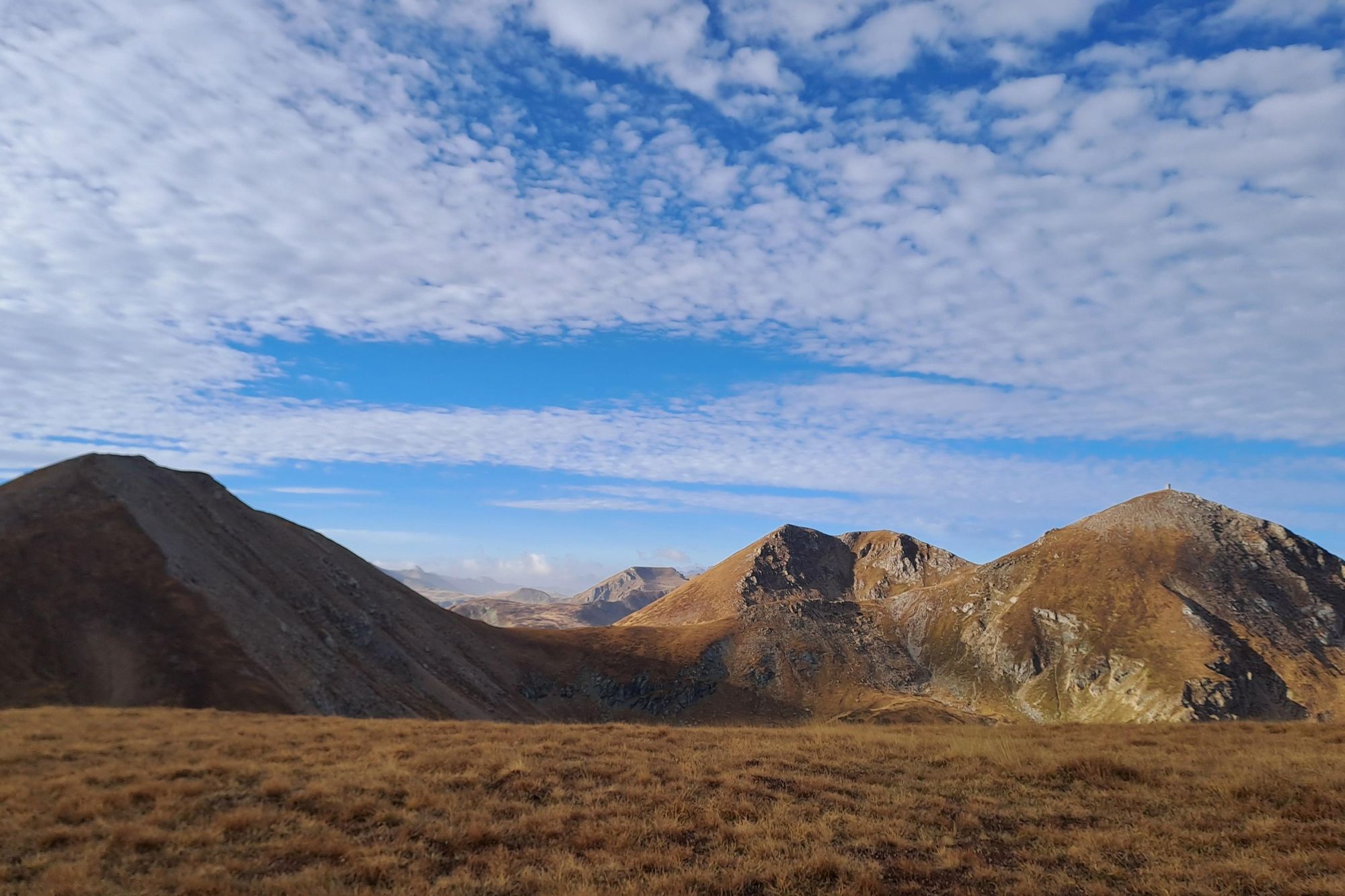
- Perfect for: uncrowded trails and wild summit views
Tito is the highest peak in the wild Sharr Mountains, which extend from Kosovo to North Macedonia. It's also steep, with a curious brick tower at the summit. One way to get to the top is along the Summer Trail, which takes you around the base of Bakardan peak. From Badarkan Saddle it's a 500 metre vertical ascent to the top of Tito.
The view from the top is spectacular, with panoramic views across the Sharr Mountains, alongside the glacial valleys and lakes between them. Tito can also be climbed as part of a long distance hiking route through the mountains, known as the High Scardus Trail.
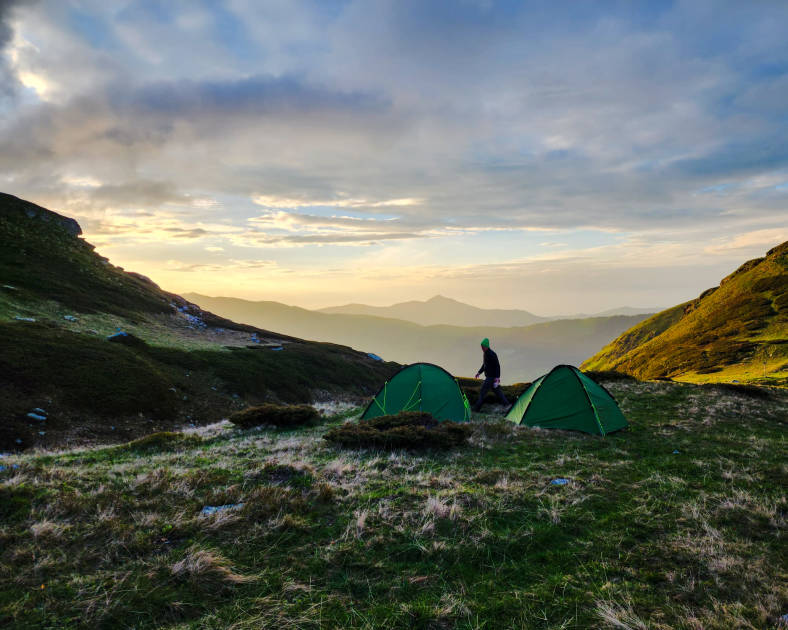
10. Bobotov Kuk, Montenegro (2522m)
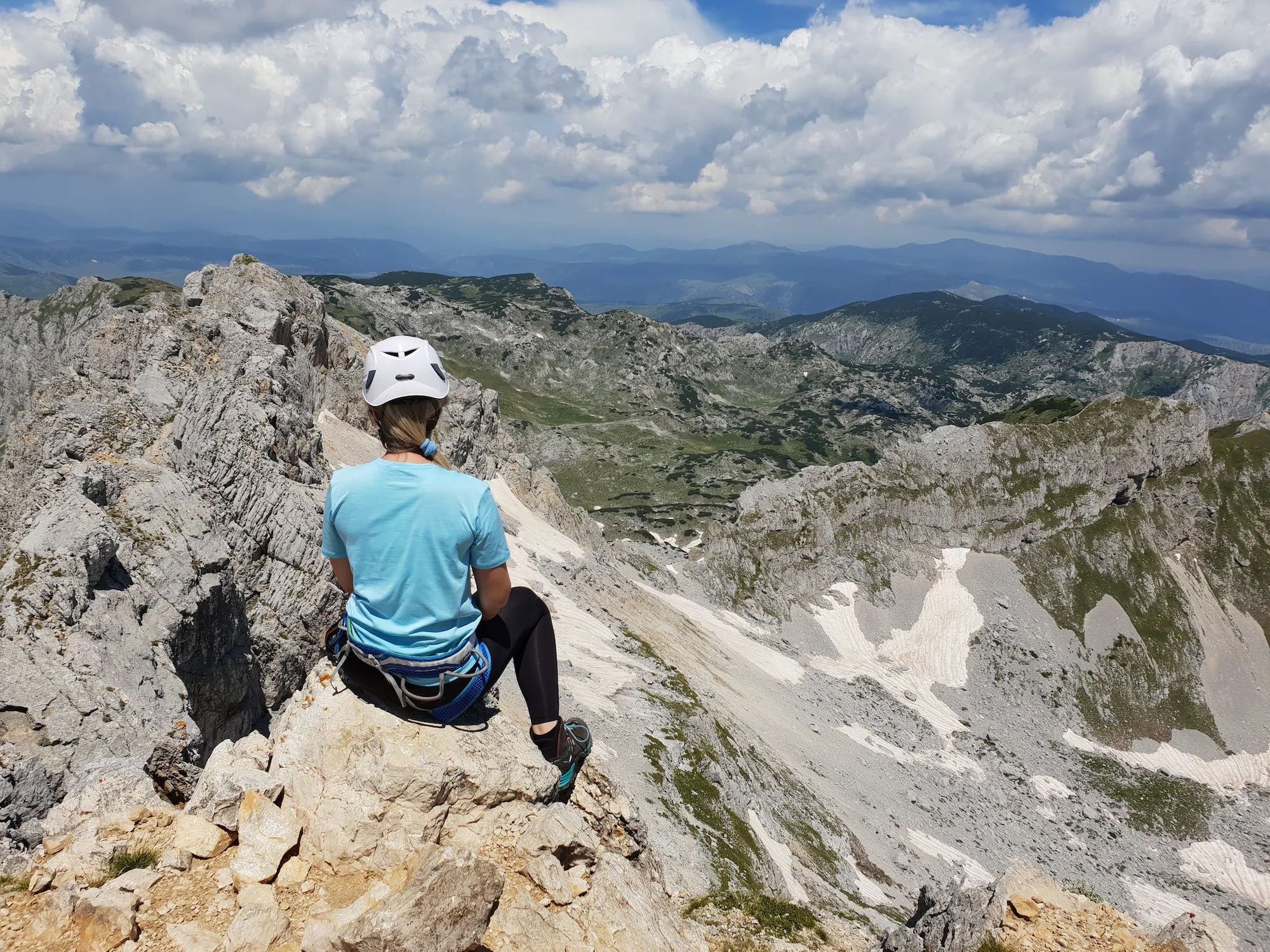
- Perfect for: exploring the wilderness of Durmitor National Park
Bobotov Kuk is Montenegro's highest peak, and is an ideal summit for beginner mountaineers. Summit day involves around 14km of hiking, and an ascent of 900m, so it's not for the faint-hearted. However, you don't need any technical experience.
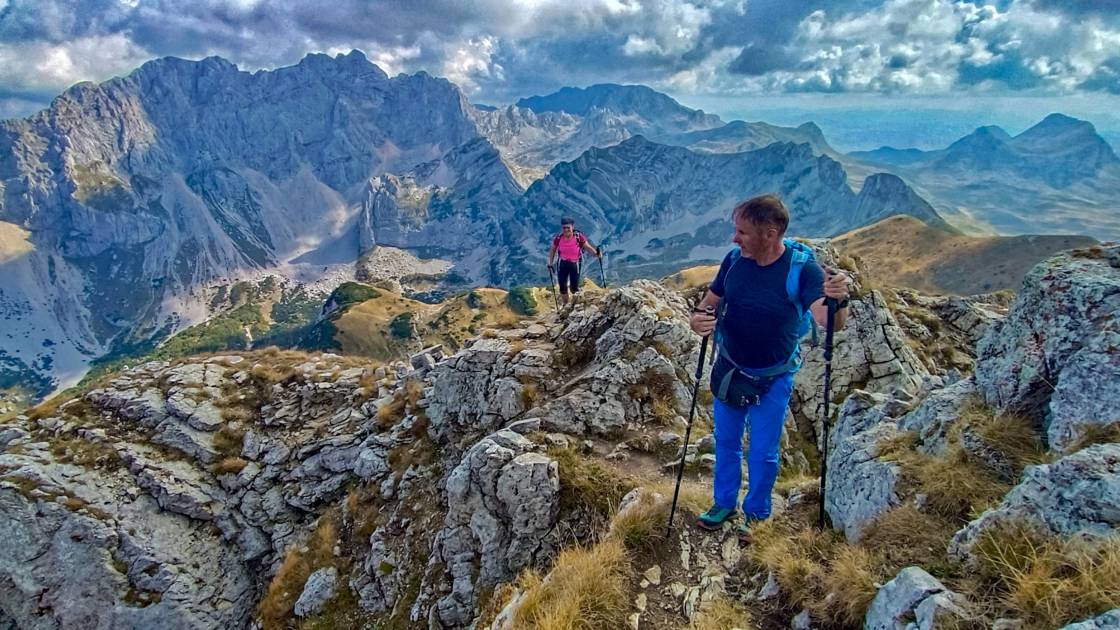
The hike begins from the Katun Dobri Do trailhead (1,700m) and winds upward through the wilderness of Durmitor National Park. At the top of the mountain you'll have epic views of the rocky Durmitor Massif, and the glacial lakes in between the peaks (which the locals call 'the eyes of the mountain').
Feeling inspired? Check out our full collection of mountain climbing adventures, taking you up the highest mountains in the world.

